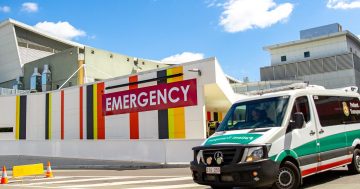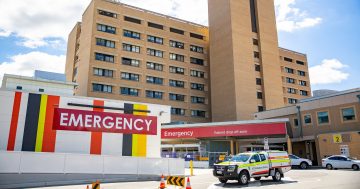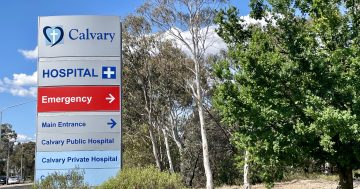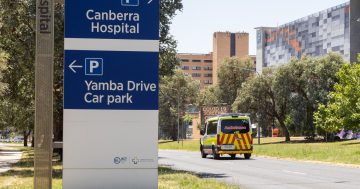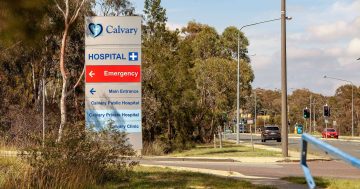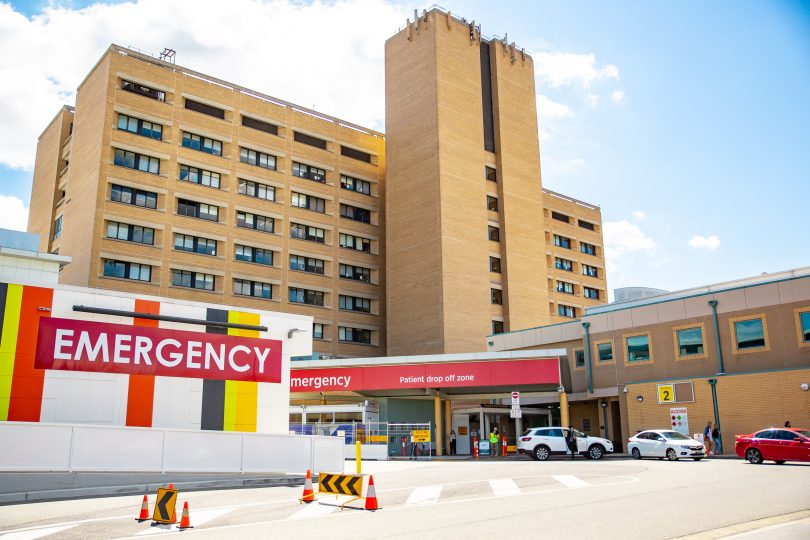
Emergency Department performance still not where the government wants it to be. Photo: File.
ACT Health failed to make a dent in emergency department (ED) waiting times and the number of patients overdue for elective surgery was up by nearly 32 per cent according to the latest ACT Public Health Services Quarterly Performance Report.
The report, covering the period October to December 2019, showed 55 per cent of patients spending four hours or less waiting to be seen, compared with 55.2 per cent in the previous quarter at the Territory’s two EDs at Canberra Hospital and Calvary Public.
There were slightly fewer presentations at 37,561 (down from 38,184). Canberra Hospital dealt with 23,362 and Calvary Public 14,199.
Small improvements in treatment starting times were recorded in Category 2 (semi-urgent) and Category 3 (non-urgent) patients, and median waiting times for Category 3 patients fell from 71 to 68 minutes but Category 5 (Non-urgent) increased from 57 to 62 minutes.
Health Minister Rachel Stephen-Smith admitted the ED performance was not where the government would like it to be, saying the increase in complexity of presentations over recent years had had a significant impact on performance.
”We know Canberrans expect better,” Ms Stephen-Smith said.
But she added the nearly completed 50 per cent expansion in Calvary’s Emergency Department treatment spaces would deliver a 20 per cent boost to capacity across the Territory.
A range of measures also commenced in late February to improve capacity, including a new multidisciplinary approach to the initial assessment of patients designed to start care as quickly as possible, streamlined admissions, and faster diagnostics and support services.
“While the hospital has been required to focus on its response to COVID-19 over the last two months, many of these measures continue to be pursued as we keep a close eye on ED performance,” she said.
While overall there was a 1.3 per cent increase in people using the nurse-led walk-in centres designed to take the heat off EDs, this can be attributed to the new Weston facility, where there were 885 presentations.
Presentations were down at Belconnen from 6,170 to 6,006 (-2.7%), Gungahlin 5,229 to 5,024 (-3.9%) and Tuggeranong 6,082 to 5,792 (-4.8%).
But the median waiting time was down 15 per cent, three minutes less than in the previous quarter, and 83.2 per cent of presentations were fully treated on site.
Ms Stephen-Smith said the decrease in presentations was likely due to seasonal fluctuations.
”It is worth noting that the total presentations across all walk-in centres for quarter 2 in 2019-20 is an increase of 1,900 in comparison to quarter 2 in 2018-19 when 15,807 patients were treated at the three walk-in centres,” she said.
Elective surgeries were down 9.5 per cent on the previous quarter, from 3,840 to 3,477, and the number of overdue patients on the waiting list increased to 783, up 189 over the previous quarter.
Canberra Hospital performed 1,961 procedures and Calvary Public 1,516.
The number of people waiting for elective surgery in the quarter was 5,073 compared with 5,131 in the previous quarter, while 4,035 were added to the list, less than the 4,452 added in the previous quarter.
Median wait times for Category 1 (Urgent) was 17 days, Category 2 was 63 days (little change), but Category 3 at 187 days improved on the previous time of 205 days.
Ms Stephen-Smith said decreases in the number of surgeries performed were seen every year in quarter 2 and quarter 3 due to reduced activity over the holiday period, but despite this they were slightly ahead of target at the end of the second quarter.
The percentage of surgeries performed within clinically recommended timeframes had increased slightly for Category 1 when compared to quarter 1 in 2019-20.
She said the quarterly performance report continued to show that the vast majority of people treated in public hospitals experienced a high quality of care.
“It’s easy to lose sight of that when we focus on numbers going up or down, but ultimately ensuring patients receive exceptional health care is the most important performance indicator for our public health system, and it’s great that 80 to 90 per cent of people provide that positive feedback,” she said.












